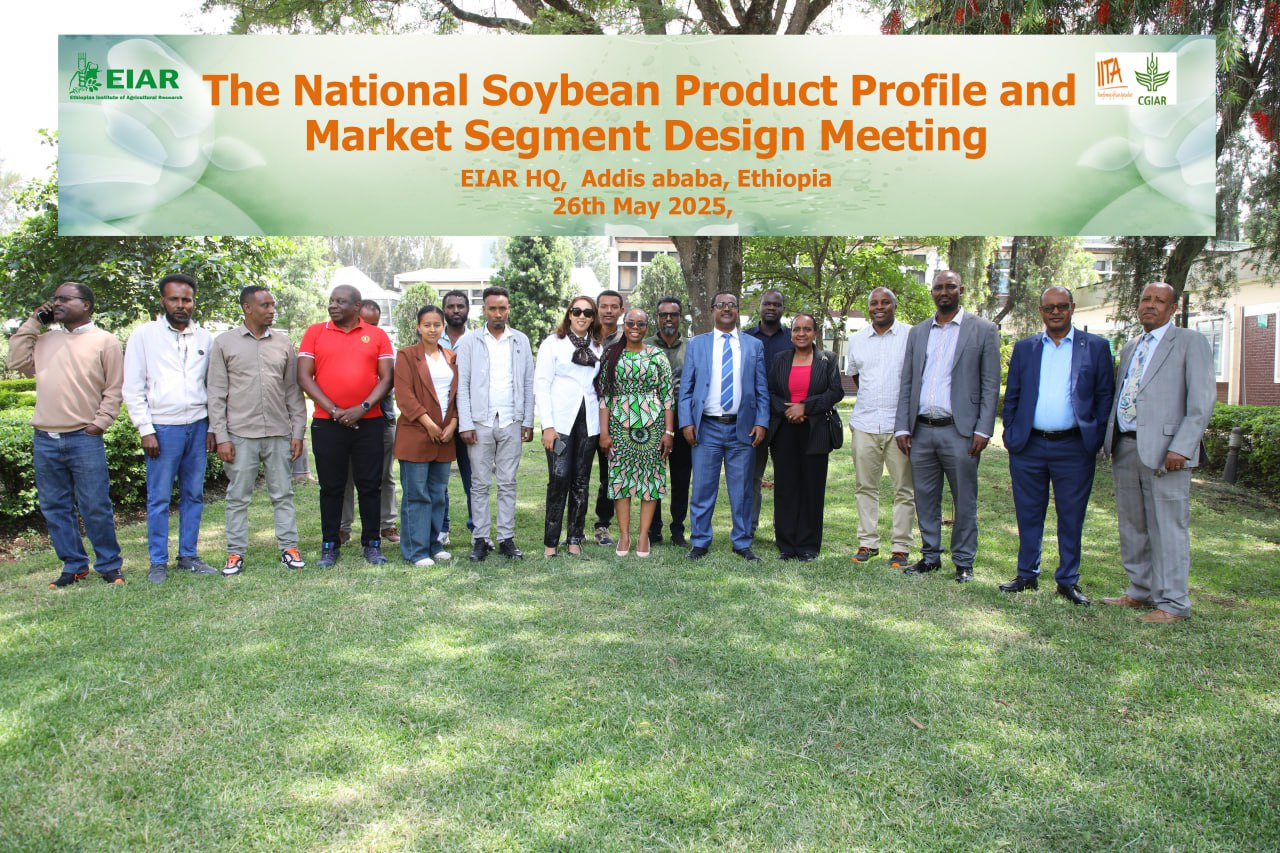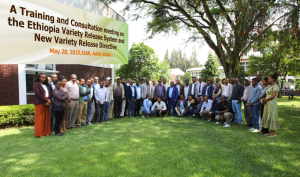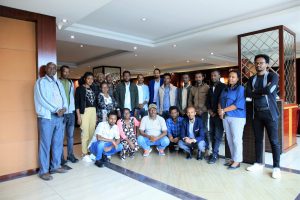*******************************************************
May 26, 2025, EIAR, Addis Ababa
The National Soybean Product Profile and Market Segment Design meeting was successfully held on May 26, 2025, at Hiruy Hall, EIAR, Addis Ababa.
The event was organized through the collaboration of the Ethiopian Institute of Agricultural Research (EIAR) and the International Institute of Tropical Agriculture (IITA). The primary objective of the meeting was to define national priorities, market segments, and target product profiles to guide the national soybean breeding program.
The meeting brought together a diverse group of stakeholders from across the soybean value chain in Ethiopia, including: Dr. Godfree – IITA, Ms. Gweeny – IITA, Zambia, Mr. Dean – IITA, Nigeria, Dr. Lennin – CIMMYT, Kenya and Various national stakeholders representing research, development, and the private sector.
Dr. Fekadu Gurmu, Crop Research Director at EIAR, welcomed participants and appreciated the strong partnership between EIAR and IITA in technology generation and research across soybean and other crops. He highlighted the importance of National Product Design Teams (PDTs) as participatory decision-making tools that help minimize breeder bias and ensure that the needs and perspectives of all stakeholders are adequately represented—an essential approach in modern, demand-driven breeding programs.
Professor Nigussie Dechassa, Director General of EIAR, officially opened the meeting by emphasizing the significance of the PDT process. He noted that the meeting serves as a key platform to strengthen soybean value chain development in Ethiopia, helping to address the country’s edible oil deficit and enhance export opportunities.
The PDT meeting program focus on (1) Client Orientated Approach to Defining and Responding to Market Needs in CGAIR – NARES – SME. Which is Review market segments, refine market segments for national needs, and define target product profiles for each market segment using Market Intelligence Initiative tools. (2) Partner assessments: Conduct baseline assessments of the breeding program using the ABI template. Conduct station assessment of the breeding program using the Breeding Resources Initiative template. (3) Improvement plan: Develop an Improvement Plan (IP) for the breeding program.



